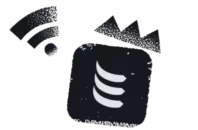What are CLID and CNAM?
CLID stands for Calling Line Identification, which is a feature used in telecommunications to identify the phone number of the caller. When a phone call is made, the CLID system captures and displays the caller’s phone number on the recipient’s telephone or Caller ID device. This allows the recipient to know the identity of the caller before answering the call.
CNAM stands for Caller Name Identification, also known as Caller ID Name. It is a feature that displays the name associated with a phone number when a call is received. Instead of just showing the phone number, CNAM provides additional information by displaying the name of the caller along with the number. This feature relies on a database that matches phone numbers with corresponding names.
Both CLID and CNAM are commonly used in caller identification services to provide information about incoming calls. They help individuals or businesses determine who is calling them and decide whether to answer the call or not based on the displayed information.
One example of CLID
Let’s say you have a landline telephone at home with a Caller ID display. One evening, your phone rings, and the Caller ID display shows the number 555-123-4567. This number is the CLID information provided by the telephone service provider.
Based on the displayed CLID, you can see that the call is coming from the phone number 555-123-4567. This information allows you to identify the caller’s phone number before answering the call. With this knowledge, you can make an informed decision about whether to pick up the call or let it go to voicemail, especially if you recognize or have any information about the caller’s number.
CLID is a valuable feature that helps individuals manage their incoming calls by providing them with the caller’s phone number information before they answer the call.
One example of CNAM
Imagine you have a smartphone with a Caller ID feature that supports CNAM. One day, your phone receives an incoming call, and the Caller ID display shows the name “John Smith” along with the phone number 555-987-6543.
In this scenario, the CNAM feature has retrieved the caller’s name “John Smith” from a database that associates phone numbers with corresponding names. This database is maintained by the telephone service provider or a third-party service.
With CNAM, you not only see the caller’s phone number but also get additional information about the caller’s identity. Seeing the name “John Smith” on your Caller ID helps you recognize who is calling before answering the call.
CNAM enhances the caller identification experience by providing the caller’s name alongside their phone number. It allows you to make more informed decisions about whether to answer the call based on the identified caller’s name and your familiarity with them.

When and how are CLID and CNAM used?
CLID (Calling Line Identification) and CNAM (Caller Name Identification) are commonly used in telecommunications to provide information about incoming calls. Here’s a breakdown of when and how they are used:
Incoming Calls: CLID and CNAM are used when you receive an incoming call on your phone. As the call arrives, the CLID system captures the caller’s phone number and displays it on your Caller ID device or phone screen. If available, CNAM retrieves the caller’s name from a database and displays it alongside the phone number.
Caller Identification: CLID and CNAM help you identify the caller before answering the call. By seeing the phone number (CLID) or the name associated with the number (CNAM), you can determine who is calling you. This allows you to decide whether to answer the call, let it go to voicemail, or take any other appropriate action.
Decision Making: CLID and CNAM assist in decision making regarding incoming calls. By providing information about the caller, such as their phone number and name, you can assess the importance, relevance, or familiarity of the call. This helps you prioritize and manage your incoming calls more effectively.
Caller Verification: CLID and CNAM can also be used for caller verification purposes. For businesses or organizations, seeing the caller’s phone number and name can help authenticate their identity before engaging in any sensitive or confidential discussions.
Telephone Services: CLID and CNAM are features offered by telephone service providers. They are typically included in service plans and activated for subscribers. Some providers may offer additional options to enable or disable CLID or CNAM display on outgoing calls, depending on the user’s preference.
Overall, CLID and CNAM play a crucial role in caller identification, providing information about the caller’s phone number and name. These features assist in making informed decisions, prioritizing calls, and enhancing the overall call management experience.
CNAM Limitations
While CNAM (Caller Name Identification) is a useful feature for providing caller information, it does have some limitations. Here are a few:
Inaccurate or Missing Information: CNAM relies on a database that associates phone numbers with corresponding names. However, this database may not always be up to date or comprehensive. As a result, the displayed name may be outdated, incorrect, or simply unavailable for certain phone numbers. Therefore, it’s possible to encounter instances where CNAM does not provide the desired caller name or displays inaccurate information.
Unlisted or Blocked Numbers: CNAM may not be able to retrieve caller names for unlisted or blocked phone numbers. These numbers are intentionally withheld or restricted, and the associated names are not publicly available in CNAM databases. In such cases, the CNAM feature may only display the phone number without any associated name.
Number Portability: With number portability, users can transfer their phone numbers between different service providers. CNAM databases may not always immediately update to reflect these number transfers. As a result, CNAM may display the name of the previous service provider rather than the current one, leading to potential confusion or outdated information.
Third-Party Databases: CNAM databases are managed by telephone service providers or third-party entities. The accuracy and reliability of these databases can vary, as they rely on regular updates and information sharing. Differences in database quality or inconsistencies among different databases can lead to varying results and occasional inaccuracies in CNAM information.
International Calls: CNAM databases are primarily focused on providing caller information within specific countries or regions. When receiving international calls, especially from countries with different CNAM systems or limited database coverage, the CNAM feature may not be able to retrieve the caller’s name, resulting in the display of only the phone number.
It’s important to be aware of these limitations when relying on CNAM for caller identification. While CNAM can provide helpful information, it’s not always guaranteed to provide accurate or complete caller names in every situation.
How to set CNAM on IDT Express?
Head over to DIDs tab & My DIDs section. Filter on USA, Look for numbers that have a pencil icon next to them. These numbers can be updated directly from the portal.

For phone numbers that don’t have a pencil icon next to them, you can still update CNAM albeit it will have to be handled manually. You can send your requests to your IDT Express AM.
What does the clock icon mean: A clock icon next to a number indicates that the CNAM service request is in progress. Usually, it takes 24 hours for requests to be updated.





